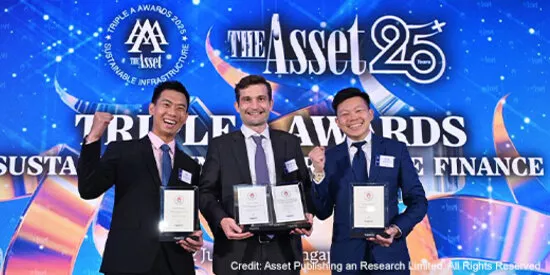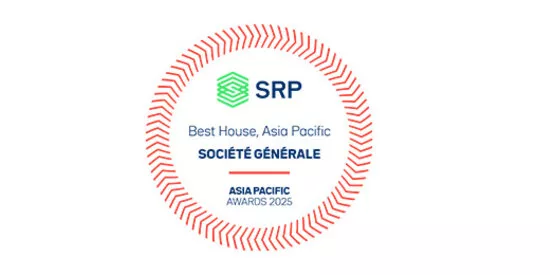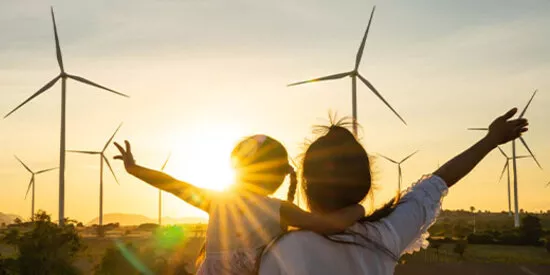
Storming ahead: the potential of offshore wind in North Asia
Although it is becoming increasingly well established in Asia, the potential of renewable energy to help combat climate change remains huge in a region that accounts for 60% of the world’s population and more than 50% of global carbon emissions.
Not only can the CO2-free electricity generated by solar and wind farms (as well as geothermal and hydropower facilities) reduce emissions directly by replacing thermal energy from coal and gas. Renewables can also be used to produce net zero fuels like ‘green’ hydrogen and ‘green’ ammonia that can help decarbonize hard-to-abate industries like steel, cement and long-distance transport.
This has spurred Asian countries to rapidly expand their use of renewables: from China to India and Australia, wind turbines dot many rural landscapes while solar panels festoon urban buildings. Across Asia Pacific, renewables already account for 26% of total electricity generation and 10% of total energy supply in 20211.
To reach national and global net zero targets, however, will require a step change. This is where offshore wind is set to play a role given Asia’s vast coastlines, abundant wind resources and the fact that offshore wind projects are generally 4-5 times the size of onshore wind or solar ones. Apart from the domestically oriented China market, three markets making rapid progress in offshore wind are Taiwan, Japan and South Korea, with a combined national generation target of over 40 Gigawatts by 2035.
Taiwan made the early running following a 2018 referendum to phase out nuclear power and replace it with low emission energy, primarily from renewables. It saw early success in setting commercially sensible regulatory frameworks and tariffs; encouraging the participation of international operators; and promoting knowledge sharing and the development of local supply chains through local content requirements. This approach was adapted by the others and today each of the three markets has well over 100 offshore wind farm projects in train, with a handful already operating, more being built and an extensive pipeline of early developments2.
For Societe Generale, the key to fostering and financing this new asset class has been the ability to bring to the table our international – and specifically, European – experience in offshore wind; our deep knowledge of the technology and its associated risk profiles; as well as an understanding of local and international financial markets and banking networks.
This ‘template’, tailored to each individual project of course, has paid dividends: Societe Generale has been involved either as core lender or financial advisor in almost all international offshore wind financings in Taiwan so far, including the very first project Formosa 1, which is up and running, and the following four large offshore wind projects which are under constructions. The bank has also played a role in the early offshore deals in South Korea. And it advised the winning consortium that swept the first round of offshore auctions in Japan last December.
On the one hand, the bank’s local market knowledge allows it to arrange financing from a combination of international as well as local banks for foreign developers and operators that are new to those markets. On the other hand, it can use its experience in project financing and issuing sustainable and green bonds to mobilize local lenders that may not be as familiar with the risk profile of the offshore wind asset class and long-term, non-recourse finance, or with the investor appetite for green assets.
An example of all of these skills coming together is the recent financial close of the Ishikari wind farm off the coast of Hokkaido in norther Japan. Developed by Pattern Energy of the US, this 112-Megawatt (MW) project combines the first installation of 8 MW turbines in Japan, along with 100 MW of battery storage and a 20-year power purchase agreement (PPAs) with Hokkaido Electric, which will buy 100% of the output. Societe Generale is the only non-Japanese bank in the lending consortium3.
There is plenty more innovation to come, as turbine sizes increase – 12 and even 14 MW are in development – and regional supply chains develop. Regulatory frameworks are also changing, and the original feed-in-tariffs are being replaced by more competitive pricing mechanisms, such as ‘Feed in Premium’ combined with corporate PPAs. Beyond that lies the promise of floating offshore wind platforms, which are already under construction in Europe and will open up more of Japan’s and South Korea’s steep coastline and areas further out to sea where the wind is stronger.
Offshore wind is a promising new asset class; one in which Societe Generale was an early mover; and one in which we plan to continue to lead from the front.
1. IEA World Energy Outlook 2022
2. ForeSEE's Global Offshore Wind Farm Database
3. www.patternenergy.com (Press release on "Pattern Energy Closes Financing of Japan's Largest Offshore Wind Power and Storage Project)

The Asset Triple A Sustainable Infrastructure Awards 2025
Societe Generale has been recognised as the “Asia Pacific ESG Project Finance House of the Year”, “Australia Project...

Asia economic and investment outlook for second half of 2025
Where is Asia headed in the second half of this year?

Societe Generale wins Best House for Asia Pacific and Best Fixed-Income Provider at the SRP Asia Pacific Awards 2025
The Structured Retail Products (SRP) Asia Pacific Awards celebrate the top offerings and players in the structured...

Any respite for Japan’s bonds is likely to be short-term
By Stephen Spratt, APAC Developed Markets Rates Strategist at Societe Generale


